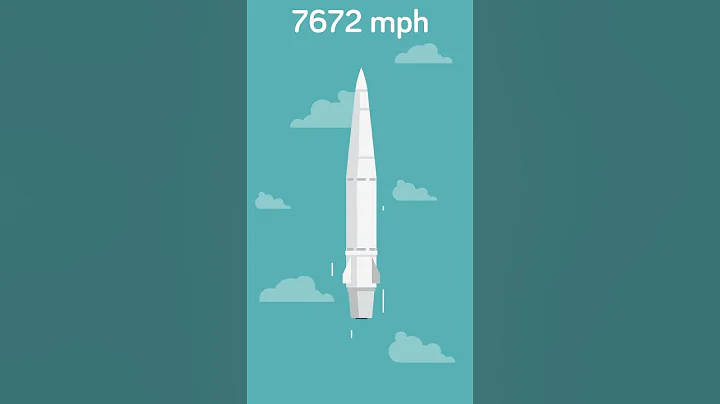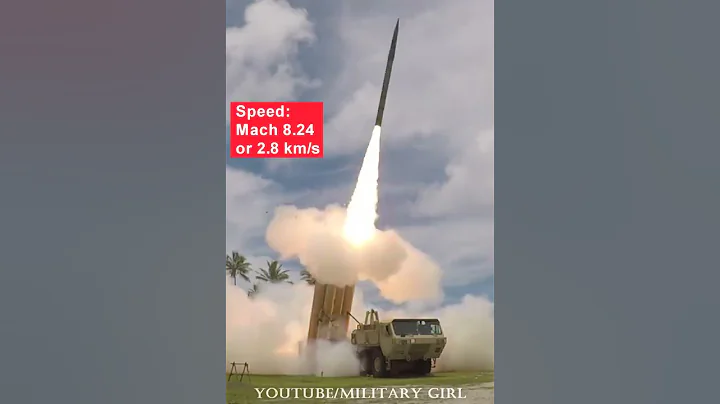
Author of this article: Beiyue Qingfeng
According to a report from Global Network citing the US Defense News website, on July 13, local time, the US Air Force issued a statement stating that the US Air Force carried out an attack on the coast of Southern California on July 12. AGM-183A (ARRW) booster test, this test is the third launch test and the 12th overall flight test of the project. The AGM-183A is still mounted on the B-52H bomber to prove that it can be launched from under the pylon of the aircraft wing and reach sufficient speed and altitude to release a hypersonic glide vehicle.

The second test of the U.S. AGM-183A booster was successful, but it is still far from a complete success.
Lockheed Martin said in a statement that this was the second successful test and proved that ARRW can withstand high-speed Operation at sonic speeds and collecting flight data and verifying the ability of the missile to separate from the aircraft and reach its intended release point can be used for further flight testing. It also confirmed the weapon's ability to safely separate from the aircraft and fire from a standoff distance. Hit the target. The U.S. Air Force pointed out that it marked the end of the booster testing phase of the hypersonic program.
The U.S. Air Force mentioned in a statement: ARRW is designed to provide the capability to destroy high-value, time-sensitive targets . It will also expand the capabilities of precision strike weapons systems through rapid response strikes against heavily defended land targets.
This test of the U.S. Air Force is still a booster test and has not released a hypersonic gliding aircraft. The most important waverider gliding test has not yet begun. Lockheed Martin said it will move to full-scale testing by the end of this year and release the gliding body aircraft to conduct waverider gliding tests. The project is currently 11 months behind schedule. But this is understandable. After all, our own missiles have failed many times, including several problems with the booster. This test has solved the problem of the booster, and there will no longer be frequent problems with the booster. The embarrassing situation of the problem.

But this booster is actually equivalent to a rocket accelerator, and there is still a long way to go before the successful test of hypersonic missile . In other words, the current hypersonic missiles in the United States have not made any breakthrough progress.
In fact, the US "Power" website also mentioned that this successful test of the US Air Force booster was carried out amid various setbacks and failures faced by the ARRW program. According to the 2022 Government Accountability Office Annual Assessment of Weapons Systems, ARRW's rapid and aggressive prototyping efforts resulted in "delays in interim milestones," prompting the Pentagon to consider certain timeline trade-offs.
The U.S. "Power" website also mentioned: The U.S. Air Force's next step - testing the glide vehicle will provide a test that is more representative of the end-to-end use of the system, which is a huge shift for the U.S. Air Force's hypersonic program. But it's also a pain point currently facing the Pentagon. Because the United States has lagged far behind China and Russia in the development and fielding of hypersonic weapons .

The United States successfully tested the "Operation Fires" missile, but it was only at the most preliminary stage
However, in addition to the recent news of the successful test of the US air-launched hypersonic weapon, the Pentagon also successfully tested the "Operation Fires" (OpFires) Hypersonic missile.
According to reports from the US "Power" website, on July 13, local time, the US Defense Advanced Research Projects Agency stated that it had completed the first successful demonstration of the capabilities of the ground-launched hypersonic missile system under the "Combat Firepower" program.
The U.S. Defense Advanced Research Projects Agency said in a statement: The "Combat Firepower" program test was conducted at the U.S. Army's White Sands Missile Range in New Mexico. With this test, the Combat Fires hypersonic missile system met all of its pre-established test objectives, including the first launch of a medium-range missile using a U.S. Marine Corps Logistics Vehicle System Replacement (LVSR) 10-wheel heavy-duty truck device, as well as conduct missile launcher exit, stable flight capture and start-up testing using the US Army artillery fire control system.
The test was conducted in partnership with prime contractor Lockheed Martin Corporation . The overall system includes components from other companies, such as the rocket booster designed and supplied by Northrop Grumman. This rocket booster is paired with an unpowered top-mounted hypersonic boost-glide vehicle warhead and is then used to propel the pressurized glide vehicle until it reaches the desired speed and altitude. Once parameters are met, the vehicle will detach from the booster and glide along an atmospheric flight path to engage the target at hypersonic speeds. US media reported in the report that although its flight speed is very worthy of attention, the relatively flat flight path of the pressurized gliding aircraft and its ability to significantly maneuver while flying along this path are a highlight of this test.

"Combat Firepower" is a so-called revolutionary project launched by Lockheed Martin. According to information released by the United States, the "Combat Firepower" system plans to carry a triple launcher on a five-axis multi-purpose chassis. The missile can carry both the ARRW hypersonic glide body warhead and the conventional warhead of the Precision Strike Missile (PrSM), with a maximum range of about 1,000 miles (about 1,600 kilometers).
According to Steve Trimble, a reporter from American Aviation Week, the "Combat Firepower" missile can be regarded as a ground-launched version of the "air rapid response weapon". It can be regarded as the AGM-183A in the US Air Force. The "Airborne Rapid Reaction Weapon" (ARRW) hypersonic missile adds a next-generation throttle rocket engine and changes it to a ground launch mode. It can carry a waverider "tactical boost glide body" (TBG) or Precision Strike Missile (PrSM) conventional warhead. Compared with the US Army's other hypersonic missile "Dark Eagle" and the "Long Range Hypersonic Weapon" (LRHW), OpFires is smaller in size and can be transported by a C-130 transport aircraft. It uses a HEMTT truck as a chassis and can carry 3 missiles. The pallet-loading system supports off-road travel and rapid launch and reloading, and the range is likely to be around 1,000 miles (1,600 kilometers), which is between the precision strike missile (the initial version has a range of 499 kilometers) and the long-range hypersonic weapon (the initial version has a range of more than 2900 kilometers).
However, according to Steve Trimble, the OpFires missile is expected to be more powerful and more flexible than "long-range hypersonic weapons" because the OpFires missile is equipped with a throttled second-stage rocket engine, which means that the OpFires missile The weapon system is more flexible and can be used in a variety of combat scenarios, especially in future "distributed combat concept" scenarios, where it can play a great role.

"OpFires" (OpFires) integrates Sierra Nevada Corporation's "Vortex" compact upper stage engine on its tactical missile . The engine uses liquid oxidizer + solid combustible agent and can be restarted multiple times in flight to change thrust and depth. Throttle, thereby being able to hit any target within its range without having to perform energy-losing maneuvers. Realize the maneuverability of fourth-generation ballistic missiles with pulse recharge, increase the difficulty of interception of enemy anti-missile systems , reduce air flight time, thereby improving survivability and mission success rate. The intended "payload" in the
OpFires system will be an unpowered hypersonic boost-glide vehicle. Rocket boosters will propel it to optimal altitude and speed, after which it will glide through the atmosphere at extremely high speeds on a relatively flat trajectory to its target.
However, although the United States has made progress in two different types of hypersonic weapons in recent days, it is worth noting that compared with the development progress of hypersonic weapons in China and Russia, this is not worth mentioning. The air-launched version of the AGM-183A tested this time is only a rocket booster and is still far from being completely successful, while the test of the OpFires missile is basically in the most primitive preliminary stage. The U.S. "Power" website commented: Although the two recent tests were considered successful, it remains to be seen how these two programs will continue to make progress, given the complexity of hypersonic weapon systems.At the same time, it also mentioned "Let's see how the success of the US military's hypersonic weapons stacks up." But just as they began to pile up, China and Russia had already left them far behind.





















